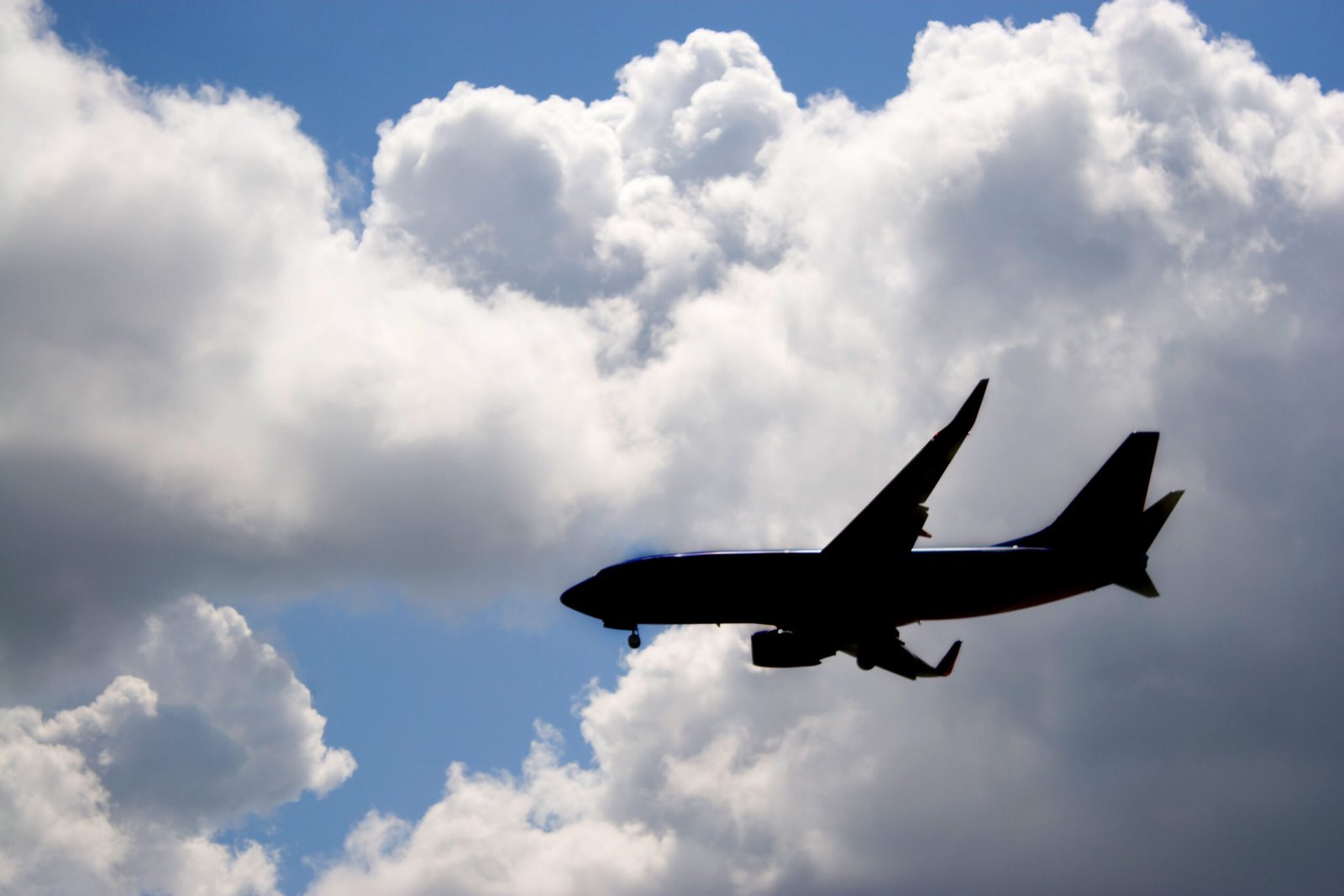pilot training
Soaring Above: The Future of Sustainable Aviation and Green Technologies
As humanity continues to grapple with climate change, the aviation industry is not standing still. With a growing focus on sustainability, advancements in green technologies are setting the stage for a new era in flight. From pilot training initiatives to innovative aircraft design, the future of aviation is bright—and green.
First and foremost, let’s talk about the pilots of tomorrow. As we shift towards more sustainable aviation practices, training programs are evolving accordingly. Pilot and RC drone training are becoming increasingly popular career paths for those interested in entering this dynamic field. Flight schools now integrate eco-friendly practices into their curriculums, focusing on energy-efficient flying techniques and emphasizing the importance of reducing carbon footprints.
Moreover, with the rise of unmanned aerial vehicles (UAVs), aspiring aviators have a plethora of opportunities at their fingertips. Training programs for remote-controlled drones encompass everything from basic piloting skills to advanced navigation techniques. Many reputable flight schools offer comprehensive courses that cover regulations, safety protocols, and even environmental impacts—ensuring that future drone operators are equipped with both technical expertise and ecological awareness.
The demand for skilled pilots is accompanied by an increasing need for qualified evaluators who can assess various flight training programs. Potential students often find themselves overwhelmed with options; therefore, thoughtful reviews play a crucial role in helping them make informed decisions. Institutions now host forums where experienced pilots share insights about different training facilities, equipment quality, available mentors, and overall experiences.
These reviews help paint an accurate picture of what prospective students can expect from their chosen program while shedding light on how environmentally conscious these institutions are becoming in light of recent developments in sustainable aviation technologies.
As we soar higher into the skies of tomorrow’s aviation landscape, it’s also essential to consider the role of aviation brokers and insurance companies in promoting sustainability. These entities play a significant role in facilitating eco-friendly practices by offering tailored policies that reward greener operations. For example, many brokers now provide incentives for operators who invest in fuel-efficient aircraft or implement strategies that minimize emissions.
Insurance rates can vary widely based on an operator’s commitment to sustainability; companies often view eco-friendly measures as indicators of reduced risk. By aligning financial benefits with environmental responsibility, insurance providers encourage airlines and private operators alike to adopt greener technologies—ultimately contributing to lower global emissions across the board.

Furthermore, as technology advances rapidly—think electric propulsion systems or biofuels—the risk landscape shifts too. Insurance companies must adapt their offerings accordingly while ensuring they remain competitive within the market—and this adaptability could serve as a catalyst for further innovation within sustainable aviation.
In conclusion, as we venture into an era marked by heightened ecological concerns and technological breakthroughs, it’s clear that sustainable aviation isn’t just an idealistic notion—it’s becoming our reality. From nurturing skilled pilots through cutting-edge training programs to fostering relationships between brokers and insurers that promote green strategies—the trajectory ahead looks promising indeed! Together we can embrace this journey toward a cleaner sky while redefining what it means to take flight responsibly.
Soaring High: The Evolution of Aviation Technology
Aviation has always been a field marked by innovation and rapid evolution, transforming the way we connect with one another across vast distances. From the first powered flights to today’s sophisticated drones, the technology behind aviation continues to evolve at a breathtaking pace. As this dynamic landscape grows, so too do the opportunities for aspiring pilots and aviation professionals.
One of the most exciting developments in recent years is the rise of pilot training programs that cater to both traditional pilots and remote-controlled (RC) drone operators. For those considering a career in aviation, obtaining proper certifications is crucial—whether you’re aiming to fly commercial aircraft or operate advanced drones for various applications such as photography, agriculture, or emergency response. Many flight schools now offer specialized training programs that incorporate both ground school education and practical flying experience tailored to individual needs.
For budding aviators interested in RC drone operation, there are numerous training courses designed to equip them with necessary skills. These programs often cover topics like airspace regulations, safety protocols, and hands-on flying techniques. Furthermore, as industries increasingly rely on drones for aerial surveillance and data collection, gaining expertise in this area can open new doors and lead to rewarding career paths.
Flight training program reviews reveal diverse experiences among students and highlight which institutions stand out in providing comprehensive education. Prospective pilots should seek out schools with proven track records of success stories—where graduates have gone on to secure jobs with major airlines or have established their own flight operations. Detailed reviews often focus on aspects such as instructor qualifications, aircraft availability, student-to-instructor ratios, and overall curriculum effectiveness.
Additionally, many aspiring pilots find value in online forums where they can share insights about specific programs or seek advice from seasoned aviators about what type of training best suits their career aspirations. In an industry where networking plays a significant role in landing jobs post-training, leveraging these platforms can be beneficial.
As technology advances within aviation itself—think autopilot systems or augmented reality cockpit displays—the need for experienced flight instructors becomes even more pronounced. Schools must stay ahead of these trends by integrating modern tools into their curriculums while maintaining foundational flying skills essential for all pilots.
Another vital component underpinning the aviation ecosystem is the role played by brokers and insurance companies that provide coverage tailored specifically for aviation purposes. Whether you’re a private pilot owning your aircraft or running an aerial photography business with multiple drones at your disposal, understanding aviation insurance is paramount.
Insurance rates vary based on factors such as aircraft type, pilot experience level, location of operation, and intended use—commercial versus recreational activities can result in significantly different premiums. Aviation brokers specialize in navigating this complex world; they help clients find policies that suit their unique needs while ensuring they maintain compliance with federal regulations.

In conclusion, as we soar into an era defined by technological advancements within aviation—from enhanced flight training options to innovative drone capabilities—the opportunities abound for those willing to invest time and effort into becoming skilled professionals. With robust educational pathways available alongside specialized insurance solutions designed specifically for aviators’ needs, there’s never been a better time to embark on your journey through the skies!
Wings of Change: How Aviation Is Revolutionizing Global Travel
In an era where the world seems to shrink with every technological advancement, aviation stands as a beacon of innovation and efficiency in global travel. The advent of new training programs, the growth of drone technology, and the expanding role of aviation brokers and insurance companies are reshaping how we navigate the skies. Let’s dive deeper into how these elements are not just enhancing the aviation landscape but also influencing careers and safety standards.

One cannot discuss the evolution of aviation without highlighting the burgeoning field of pilot and remote-controlled (RC) drone training. As air travel becomes more integral to our lives, there is a pressing need for skilled professionals who can operate aircraft safely and efficiently. Flight schools across the globe have ramped up offerings, introducing comprehensive programs that cater to aspiring pilots as well as those interested in mastering drone technology.
Pilot training has become more accessible than ever. Many institutions provide flexible schedules, allowing students to balance their education with personal commitments. In addition to traditional flight schools, online courses have emerged, enabling aspiring aviators to grasp theoretical concepts from anywhere in the world. Moreover, hands-on flight training programs are tailored to simulate real-world scenarios, ensuring that future pilots are equipped with essential skills before they take flight on their own.
For those captivated by drones, specialized RC drone training programs have surged in popularity. As businesses increasingly integrate drones into their operations—from agriculture to cinematography—qualified operators are in high demand. These courses often encompass everything from basic piloting techniques to advanced aerial photography tactics, ensuring participants gain a nuanced understanding of this rapidly evolving field.
However, it’s not just about training; reviewing flight programs has become critical for prospective students aiming for excellence. Websites and forums dedicated to pilot education allow individuals to share experiences and insights about various schools’ curricula, instructors’ expertise, equipment quality, and overall program satisfaction. Such transparency empowers future aviators to make informed decisions about where they invest their time and money.
Shifting gears from individual training paths to broader industry dynamics brings us to aviation brokers and insurance companies—key players in maintaining safety standards within this expansive sector. As air traffic increases worldwide, so do concerns regarding liability and risk management. Brokers specialize in navigating complex insurance landscapes for both commercial airlines and private pilots alike.
The role of these brokers extends beyond mere transactions; they serve as consultants who help clients understand coverage options tailored specifically for their needs—from hull coverage on aircrafts to liability protections against third-party claims during flights or ground operations. With customized solutions becoming commonplace due to varying operational requirements across different regions or types of flights (commercial versus private), having knowledgeable brokers can significantly enhance an operator’s peace of mind.
Furthermore, insurance rates fluctuate based on numerous factors including flying experience, type of aircraft operated, geographic location—and even economic conditions that affect general market trends. Understanding these intricacies ensures that both seasoned pilots and newcomers can secure reasonable premiums while safeguarding against unforeseen events.
In conclusion, as we soar into a new age defined by innovations in pilot education and advancements in drone technology alongside professional guidance from aviation brokers—it’s clear that global travel is being revolutionized one flight at a time. The wings of change are not merely lifting planes but also propelling careers forward while ensuring safety remains paramount throughout this exhilarating journey through the skies.
The Future of Flight: Innovations Reshaping the Skies
As we soar into a new era of aviation, the skies are becoming increasingly populated with innovative technologies and training programs that promise to reshape the future of flight. From aspiring pilots to drone enthusiasts, today’s aviation landscape is teeming with opportunities for growth and exploration. Let’s take a closer look at some of these transformative trends.
*Pilot & RC Drone Training for Careers**
The demand for skilled pilots has never been greater. With advancements in technology and an increasing number of commercial airlines expanding their fleets, the need for trained professionals is reaching new heights. Traditional flight training schools continue to play a vital role in cultivating talent, focusing on everything from foundational knowledge to advanced maneuvering techniques. However, the introduction of remote-controlled (RC) drones is adding an exciting twist to pilot training.
Drone technology is not just a hobby; it’s becoming essential across various industries including agriculture, real estate, and even search-and-rescue operations. Many flight schools are now incorporating specialized programs designed to teach students how to operate these unmanned aerial vehicles safely and effectively. These courses provide hands-on experience with cutting-edge equipment while also emphasizing regulatory compliance and safety protocols.
For those looking to enter this dynamic field, investing in quality training can be a game-changer. Enrolling in reputable programs that offer simulator time alongside real-world flying experiences equips aspiring aviators with skills that are highly sought after by employers.
*Flight Training Program Reviews**
Choosing the right flight training program can be overwhelming given the myriad options available today. Each school boasts unique methodologies, benefits, and costs associated with their curricula. To help navigate these choices, prospective pilots should consider reviews from past students as invaluable resources.
Flying schools often differ in their teaching styles—some may focus on intensive one-on-one instruction while others might offer group classes or online modules. Reading up on student testimonials can unveil insights into instructors’ expertise, fleet conditions, and overall satisfaction levels within each program.
For instance, some institutions provide state-of-the-art simulators that mimic real flying conditions nearly flawlessly—this can significantly enhance learning outcomes without putting students at risk during initial phases of training. Additionally, programs that allow flexibility in scheduling often cater better to working adults or those juggling multiple commitments.
Ultimately, individuals should seek out accredited programs recognized by aviation authorities; this ensures they receive education that meets industry standards while positioning them favorably for future employment opportunities.
*Aviation Brokers and Insurance Companies and Rates**
As the aviation sector continues to expand rapidly, understanding the roles of aviation brokers and insurance companies becomes crucial for both pilots and aircraft owners alike. Brokers serve as intermediaries who facilitate transactions between buyers and sellers or assist clients in finding insurance solutions tailored specifically to their needs.
Purchasing an aircraft—or even renting one—often entails navigating complex regulations and financial implications; that’s where experienced brokers shine through their expert knowledge of market rates and trends. They simplify this process by offering valuable insights into pricing dynamics which can vary significantly based on factors like aircraft type or intended use.

Similarly, securing adequate insurance coverage is paramount for all aviation endeavors; it protects against potential liabilities while providing peace of mind during flights. Rates fluctuate based on numerous variables including pilot experience levels and operational history—thus engaging with knowledgeable insurers helps ensure you find appropriate coverage at competitive prices.
In conclusion, as innovations continue reshaping our skies—whether through enhanced pilot training methods or advances in drone technology—the future seems brighter than ever for those eager to embark on careers within aviation’s diverse realms. By staying informed about emerging trends such as broker services or comprehensive insurance options—aviation enthusiasts can confidently navigate this exhilarating journey ahead!
A Journey Through Time: The Evolution of Aircraft Design
The world of aviation is a fascinating tapestry woven from innovation, ambition, and relentless pursuit of the skies. From the Wright brothers’ first powered flight in 1903 to today’s advanced drones, aircraft design has undergone a remarkable transformation. As we delve into this journey through time, we’ll explore not only the evolution of aircraft but also the paths available for aspiring aviators and the intricacies surrounding aviation brokers and insurance.

In recent years, pilot training has evolved dramatically alongside technology. Traditional flight schools offer comprehensive programs that prepare students for careers as commercial pilots or private operators. These institutions blend theoretical knowledge with practical experience, teaching everything from basic aerodynamics to complex navigation techniques. However, an exciting option has emerged: remote-controlled (RC) drone training. As UAVs (unmanned aerial vehicles) become increasingly prevalent across industries—from agriculture to cinematography—the demand for skilled operators is skyrocketing.
Training programs focused on RC drones are tailored to equip individuals with essential skills like understanding airspace regulations and mastering flight controls. Many organizations now offer certifications that can significantly boost one’s employability in this burgeoning field. Moreover, these courses provide invaluable hands-on experience with cutting-edge technology, preparing students not just for piloting but also for roles in drone maintenance and operations management.
For those considering traditional pilot pathways, reviews of flight training programs can be incredibly informative. Prospective students often seek insights into various institutions’ curricula, instructor qualifications, and overall success rates in helping graduates secure employment after completion. Reputable schools frequently receive accolades for their state-of-the-art simulators and well-maintained fleets—integral components that enhance learning experiences.
Moreover, peer reviews on platforms like aviation forums or dedicated educational websites provide firsthand accounts of student experiences within these programs. Such testimonials can help navigate choices in what might be a significant investment in both time and finances—a crucial factor given the soaring costs associated with obtaining a pilot’s license today.
As we soar higher into the industry’s complexities, we encounter aviation brokers and insurance companies—two pillars that support this vast ecosystem. Brokers play an essential role by connecting buyers with aircraft sellers while navigating the often convoluted marketplace filled with varying prices and specifications. Their expertise simplifies transactions for potential owners by offering valuable insights into market trends and aircraft valuations.

Equally important are insurance companies specializing in aviation coverage. Securing appropriate insurance is vital for both private owners and commercial enterprises alike; it safeguards against unforeseen circumstances ranging from mechanical failures to accidents during operation—after all, safety should always remain paramount in aviation endeavors.
Insurance rates fluctuate based on numerous factors: type of aircraft, intended use (private vs commercial), pilot experience levels, geographical location—all contributing elements that brokers must assess thoroughly to find suitable policies at reasonable rates. Understanding these nuances can empower pilots and owners alike when making informed decisions about their coverage options.
In closing, the evolution of aircraft design mirrors advancements across multiple domains within aviation—from pioneering flights to modern drone applications—and highlights how far we’ve come as a society committed to conquering the skies. With robust training programs paving pathways for new aviators alongside supportive networks of brokers and insurers ensuring safe operations, one can only imagine where our journey will take us next!




